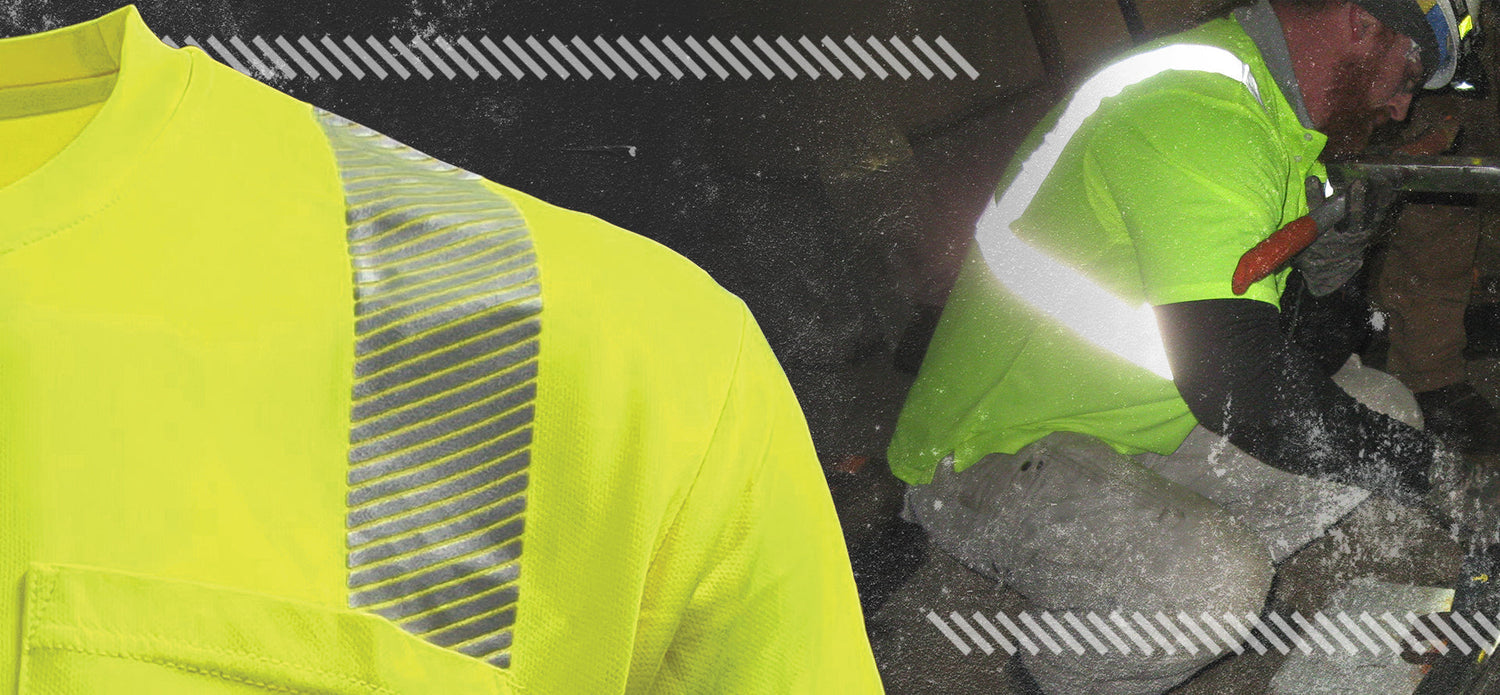High-visibility clothing is a crucial component of safety gear for workers in hazardous environments with low visibility. From construction sites and busy roadways to emergency response situations, workers must be easily seen to prevent accidents and stay safe. Hi-vis gear, such as vests, jackets, and reflective workwear, is vital in maintaining visibility, particularly in poor lighting conditions or environments with moving vehicles.
Choosing the right high-visibility clothing is just the first step; maintaining it properly is equally important. Over time, exposure to sun, dirt, chemicals, and frequent washing can degrade both the fluorescent material and reflective elements, decreasing the garment’s effectiveness. Knowing when to replace your high-visibility clothing is essential for ensuring compliance with safety standards and protecting workers in risky situations.
Reflective Apparel offers a wide range of durable, ANSI-compliant hi-vis garments designed to maximize safety and visibility in challenging conditions.
Why High-Visibility Clothing Degrades Over Time
High visibility gear, including hi-vis vests, jackets, and reflective safety clothing, is exposed to harsh conditions like sunlight, dirt, chemicals, and frequent washing. These factors degrade the retroreflective tape and fade the fluorescent colors, reducing visibility and potentially compromising workplace safety. OSHA and ANSI standards emphasize the importance of maintaining effective visibility to meet compliance requirements and reduce the risk of accidents.
Key Signs You Need to Replace Your Hi-Vis Gear
1. Faded or Discolored Fabric
Fluorescent colors and bright colors are essential for daytime visibility. If your high-visibility clothing appears faded or dull, it’s time to replace it. Sun exposure, ultraviolet light, and harsh washing agents are common culprits that can reduce visibility standards.
2. Damaged Reflective Tape
Check for cracked, peeling, or dull retroreflective strips and reflective elements. Damaged retroreflective material significantly reduces visibility in low-light conditions, posing a risk of injury, especially in high-risk environments.
3. Tears, Rips, or Worn Fabric
Tears and rips compromise the garment's durability and ability to provide maximum visibility. Damaged areas, particularly around reflective strips, reduce the effectiveness of the protective clothing, posing a danger to workers in hazardous conditions.
4. Loss of Flame-Resistant Properties (FR Gear)
If you work in environments requiring flame-resistant, high-visibility safety apparel, regularly check the care label for any changes in the fabric’s integrity. Washing and wearing can reduce the effectiveness of FR treatments, putting you at risk during emergencies or in inclement weather conditions.
5. Foul Odor or Stains
Persistent odors and stains look unprofessional and may indicate fabric degradation, potentially compromising safety. Opt for moisture-wicking hi-vis clothing to minimize odor build-up.
The Impact of Environmental Conditions on Hi-Vis Longevity
Hi-vis gear often endures harsh environmental conditions such as rain, snow, mud, and heat. Excessive exposure to moisture can lead to mold and mildew growth, while high temperatures may weaken reflective materials. Additionally, job sites with dust and chemicals can degrade the fabric and reflective strips, compromising the safety and durability of the gear.
The Role of Proper Storage in Prolonging Hi-Vis Apparel Life
Improper storage of high-visibility clothing can significantly shorten its lifespan. For example, leaving hi-vis jackets or vests in direct sunlight or humid environments can cause fading and fabric breakdown. Store items in a cool, dry place away from UV exposure and chemicals to maintain the quality of reflective safety clothing. Using designated lockers or garment bags helps protect gear from unnecessary wear.
Tips to Extend the Life of Your Hi-Vis Gear
-
Follow care instructions to preserve hi-vis colors and reflective materials.
-
Store garments away from direct sunlight and moisture to prevent fading and mold.
-
Inspect your hi-vis gear regularly for signs of wear or damage.
Frequently Asked Questions
How Often Should You Replace High-Visibility Clothing?
Replacement depends on usage frequency and exposure to harsh conditions. Typically, gear should be replaced every 6 to 12 months, or sooner, if damaged.
How Long Does Hi-Vis Clothing Last?
Hi-Vis gear generally lasts 6 months to a year with regular use. RA products are engineered to last longer than most competitors. Shirts are built to withstand 50 to 75 home wash cycles, and jackets are designed to last through approximately 25 home wash cycles. Always check the care labels inside each garment to ensure you're selecting high-quality, long-lasting uniforms.
When Should High-Visibility Clothing Be Worn?
Wear high-visibility apparel whenever working near vehicular traffic, in low-light environments, or in hazardous conditions.
Can I Repair Damaged High-Visibility Clothing?
While minor repairs may extend usage, damaged reflective materials or compromised structural integrity necessitate replacement.







